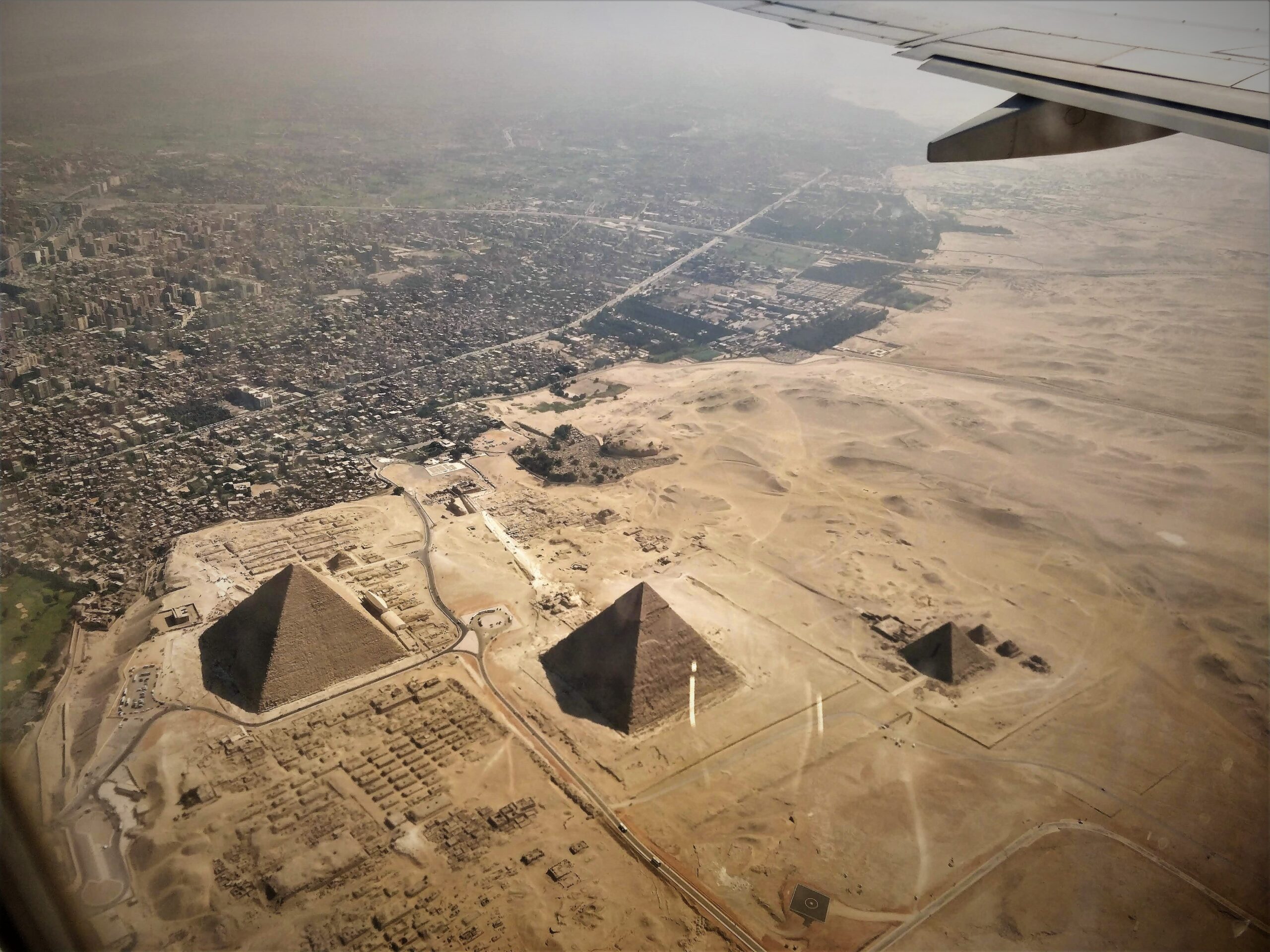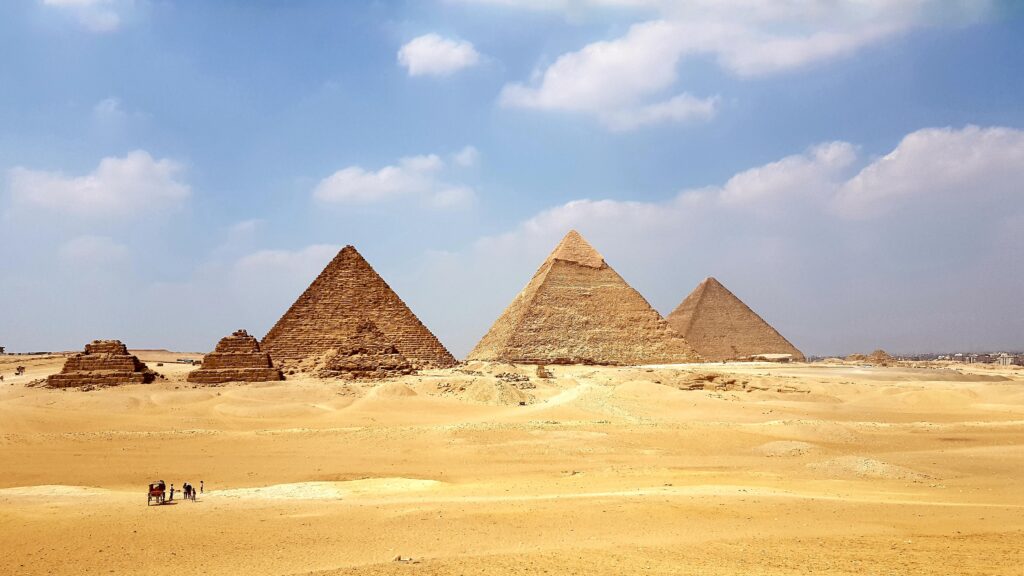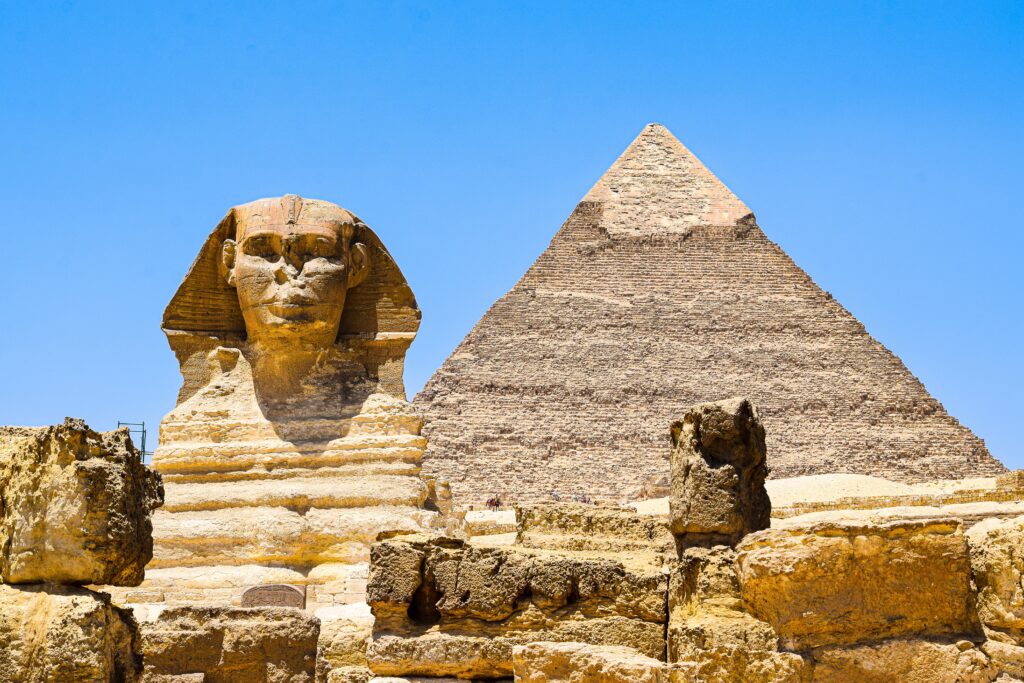Immersing in the Rich History of Egypts Pyramids
Recently updated on January 17, 2025
Total words: 2615

Table Of Content
- Exploring the Ancient Wonders of Egypt’s Pyramids
- Uncovering the Mystery of the Great Pyramid of Giza
- The Pharaohs of Egypt and the Construction of the Pyramids
- The Significance and Legacy of the Pyramids to Ancient Egypt
- Modern-Day Tourists and the Preservation of the Pyramids
Introduction
Ah, Egypt’s Pyramids! They have been a source of fascination and inspiration for centuries, and rightly so. Whether you are an experienced traveler or just dreaming of visiting this magical country, the majesty of these monuments will never cease to amaze you. If you are looking to get the most out of your trip to Egypt, it is essential to immerse yourself in its rich history. In this article, we will explore the history of Egypt’s pyramids, and the best ways to experience them.
Exploring the Ancient Wonders of Egypt’s Pyramids
Egypt’s ancient pyramids are some of the most awe-inspiring structures in the world. For centuries, they have stood like silent sentinels in the sands of the desert, majestic and mysterious. For those looking to explore the rich history of Egypt, a visit to the pyramids is a must.
The Great Pyramids of Giza
Undoubtedly the most well-known of the Egyptian pyramids, the three Great Pyramids of Giza are the oldest of the Seven Wonders of the Ancient World. Built as tombs for the Pharaohs Khufu, Khafre, and Menkaure, these pyramids are estimated to have been constructed around 2560 BCE. The Great Pyramid of Khufu is the largest of the three, and is the only surviving member of the Seven Wonders of the Ancient World. It is also the oldest of the Seven Wonders, and the only one that remains largely intact.
The Step Pyramid of Djoser
The Step Pyramid of Djoser is the oldest major stone structure in Egypt. Located in Saqqara, it was built in 2630 BCE as a tomb for the Pharaoh Djoser. Its unique design consists of six separate mastabas, or flat-roofed structures, each one built on top of the other. The outer walls of the pyramid feature intricate reliefs of animals, birds, and warriors.
The Bent Pyramid of Sneferu
The Bent Pyramid of Sneferu is another impressive ancient structure located in Dahshur. Built around 2600 BCE, this pyramid is unique in that it features two distinct angles. Its lower section is built at a 54 degree angle, while its upper section is built at a 43 degree angle. This is believed to be due to structural instability, as the original design called for a 54 degree angle for the entire pyramid.
Visiting Egypt’s Pyramids
Visiting Egypt’s pyramids is an experience that everyone should have. There are several different tours and packages available for those looking to explore the ancient wonders of Egypt. From private guides to group tours, there’s something for everyone. Whether you’re looking to explore the majestic Great Pyramids of Giza, or study the intricate reliefs of the Step Pyramid of Djoser, a visit to Egypt’s pyramids is an unforgettable experience.
Visiting Egypt’s pyramids is a great way to learn about the ancient history of Egypt, as well as gain insight into the country’s culture and beliefs. Egypt is a country filled with rich history and culture, and a visit to the pyramids will ensure that you get to experience it all. So if you’re looking to immerse yourself in the rich history of Egypt’s pyramids, then a visit to this magnificent country is a must.

Uncovering the Mystery of the Great Pyramid of Giza
Standing at a staggering 480 feet tall, the Great Pyramid of Giza is an iconic symbol of the ancient Egyptian civilization and a testament to the remarkable engineering capabilities of its builders. For centuries, the mysteries of its construction have confounded archaeologists and historians alike, and the origins of the Great Pyramid have remained a topic of debate.
The Ancient Egyptian Pharaohs
The Great Pyramid of Giza is believed to have been built for the Pharaoh Khufu by a large workforce of laborers, with the project taking around 20 years to complete. It is thought to have been a part of a complex of three pyramids, and is the only remaining structure of the original Seven Wonders of the Ancient World.
Mysterious Origins
The mystery of the Great Pyramid of Giza has been a source of fascination for centuries. Archaeologists have been unable to uncover any written evidence of its construction, and the lack of an official record of its building has only added to its allure. While there are some theories about who built the Great Pyramid and how it was constructed, the truth remains largely unknown.
Modern-Day Technology Sheds Light on the Great Pyramid
Thanks to advances in modern technology, archaeologists have been able to uncover more information about the Great Pyramid of Giza. Using laser-scanning technology, scientists have been able to accurately map the entire interior of the pyramid, revealing intricate details about its construction.
In addition, satellite imaging has allowed researchers to uncover evidence of an ancient road that once led to the Great Pyramid. This road is thought to have been used by the Pharaoh and his entourage to enter the pyramid complex.
The Great Pyramid’s Fascinating Secrets
The Great Pyramid of Giza has fascinated and mystified people for centuries. While its exact origins and construction remain shrouded in mystery, modern technology has allowed us to uncover more information about this remarkable structure. From its incredible size to its complex construction, the Great Pyramid of Giza is a timeless reminder of the ingenuity and skill of the ancient Egyptians.
The Pharaohs of Egypt and the Construction of the Pyramids
The pyramids of Egypt are some of the most iconic monuments in the world. People from all corners of the globe have been captivated by their grandeur and mystery. In order to fully understand and appreciate the amazing structures, it’s important to understand who built them and why.
The Pharaohs of Ancient Egypt
The Pharaohs of ancient Egypt were the rulers of the land. As absolute monarchs, they had complete control over the construction of these monuments. The Pharaohs were considered to be gods on earth and their power was absolute.
The Pharaohs of Egypt were responsible for the commissioning of all major construction projects. They would hire skilled architects and engineers to plan and build the pyramids. The Pharaohs had a great deal of control over the design and structure of the pyramids, and most of the pyramids were built under their direct supervision.

The Construction of the Pyramids
The construction of the pyramids of Egypt was a laborious and time consuming process. The ancient Egyptians used a variety of techniques to build these awe-inspiring monuments. They used a combination of stone blocks, wooden beams, and mud bricks to construct the pyramids.
The stones used to build the pyramids were often quarried from the nearby hills and mountains. The stones were transported via boats and barges down the Nile River. The wooden beams were imported from other regions, while the mud bricks were made on-site by mixing mud and straw.
The stones were then cut and carved into the shape required for the construction of the pyramids. The wooden beams were then used to form the inner structure of the pyramids. Finally, the mud bricks were used to fill in the gaps between the stones and to form the outer walls.
The Legacy of the Pharaohs
The Pharaohs of Egypt left behind a legacy of grandeur and mystery. The pyramids they built still stand today, a testament to their power and influence. The Pharaohs of Egypt were some of the greatest builders of all time and the pyramids they constructed are a reminder of their greatness.
The Pharaohs of Egypt will forever be remembered for their ambition and skill in constructing these awe-inspiring monuments. Their legacy lives on today, and the pyramids of Egypt remain one of the most iconic symbols of their greatness.
The Significance and Legacy of the Pyramids to Ancient Egypt
The Pyramids of Egypt are some of the most iconic structures in history. Built thousands of years ago, these huge structures have long been a source of awe and fascination. But what was their significance to ancient Egypt? What legacy have they left behind?
The pyramids were built as tombs for the Pharaohs of Egypt, the most powerful rulers in the ancient world. They were intended to be a lasting symbol of their power and greatness, and a way to ensure their everlasting legacy. The most famous of all the pyramids is the Great Pyramid of Giza, which is also the oldest and largest of the three pyramids that make up the Giza Necropolis.
The pyramids also served a religious purpose. Ancient Egyptians believed that their Pharaohs were gods, and so the pyramids were intended to be a way to help ensure their safe passage into the afterlife. Inside the pyramids, Pharaohs were buried with their possessions, including furniture, jewelry, and tombs.
The pyramids of Egypt were an important part of their society, both politically and culturally. They were used as a way of displaying the power and wealth of the Pharaohs, and they were also symbols of the Pharaohs’ divine power. The pyramids were also used as a way of expressing the Pharaohs’ devotion to the gods, and as a reminder of the Pharaohs’ role in protecting and preserving the order of their society.
The legacy of the pyramids has lasted for thousands of years. Today, they are still a source of fascination and awe, and they are also a reminder of the power and wealth of the ancient Egyptian civilization. They are a symbol of the Pharaohs’ divine power, and a reminder of the importance of preserving order and stability in society.
The pyramids of Egypt are also an important part of the country’s tourist industry, with millions of people visiting them every year. They are a reminder of the grandeur and sophistication of the ancient Egyptian civilization, and they are also a testament to the power of the Pharaohs and their divine authority.
The pyramids of Egypt are an important part of our collective history, and they are a reminder of the power and greatness of the ancient Egyptian civilization. They are also a reminder of the importance of preserving order and stability in society, and a testament to the power of the Pharaohs and their devotion to their gods.
Modern-Day Tourists and the Preservation of the Pyramids
Egypt’s Pyramids are one of the world’s oldest and most iconic monuments. The oldest standing pyramids at Giza date back to around 2500 BC. Since then, they have been the source of wonder and admiration for millions of visitors, both local and international. However, the tourist industry in Egypt has put a strain on the preservation of these ancient monuments.
As the number of tourists visiting Egypt has grown over the years, so too has the potential for damage to the pyramids. With the increase of tourists comes more wear and tear on the monuments, as well as the introduction of pollutants and other environmental risks. A 2019 study by archaeologists found that some of the pyramids had lost up to 20% of their original height due to erosion from wind and sand.
The Egyptian government has been taking steps to ensure that the pyramids are preserved for future generations. Restrictions on the number of visitors allowed to enter the pyramids each day have been implemented, as well as guidelines for visitors to follow while exploring the area. These include not touching the walls, keeping noise to a minimum, and refraining from taking any items away with them.
The government has also collaborated with conservation organizations to help with the upkeep of the pyramids. These organizations provide funds and resources for the maintenance and repair of the pyramids, as well as research into their preservation. For example, the Egyptian National Research Institute has been working to develop a method of cleaning and restoring the outer surfaces of the pyramids without causing further damage.
Despite these efforts, it is still important for modern-day visitors to the pyramids to consider the impact that their visit may have on the preservation of the monuments. Tourists should take the time to read and follow the rules set by the Egyptian government, and be conscious of their actions while exploring the area. This will help to ensure that these incredible monuments can be enjoyed by future generations.
Conclusion
In conclusion, Egypt’s Pyramids are truly a sight to behold. They stand as reminders of ancient civilizations that have long disappeared. Exploring these monuments is an adventure that will leave you in awe of the ingenuity and skill of the people who built them. The stories and legends that come with the Pyramids make them even more fascinating, giving us insight into the culture and beliefs of the people who created them. To truly experience the rich history of the Pyramids, you must immerse yourself in the experience. There is no better way to understand them than to take a trip to Egypt and see them for yourself.
1. What is the significance of Egypt’s pyramids in history?
Egypt’s pyramids are iconic structures that hold immense historical and cultural significance. They were built as tombs for pharaohs, showcasing the architectural and engineering prowess of ancient Egyptian civilization. The pyramids also served as symbols of power, luxury, and religious beliefs, reflecting the society’s strong connection to the afterlife.
2. How were Egypt’s pyramids constructed?
The construction of Egypt’s pyramids involved thousands of laborers working under the direction of skilled architects and engineers. Stones were quarried and transported to the construction site using sledges and ramps. The blocks were then stacked carefully to form the pyramid shape, with precise measurements and alignment. The process required meticulous planning, organization, and manpower to complete these monumental structures.
3. What mysteries surround Egypt’s pyramids?
Egypt’s pyramids have long been shrouded in mystery, with various theories and speculations surrounding their construction, purpose, and symbolism. The alignment of the pyramids with astronomical phenomena, the intricate internal design, and the method of stone-cutting have sparked debates among historians, archaeologists, and researchers. Theories about hidden chambers, secret passages, and undiscovered treasures continue to captivate the imagination of people worldwide.
4. How can visitors immerse themselves in the rich history of Egypt’s pyramids?
Visitors to Egypt can immerse themselves in the rich history of the pyramids by exploring not only the iconic Giza pyramid complex but also lesser-known pyramid sites such as Saqqara and Dahshur. Guided tours, museum visits, and interactive exhibits offer insights into the construction, purpose, and cultural significance of these ancient structures. Engaging with local guides and experts can provide a deeper understanding of Egypt’s pyramid heritage.
5. What are some tips for travelers visiting Egypt’s pyramids?
Travelers planning to visit Egypt’s pyramids should research and plan their trip in advance to make the most of their experience. It is advisable to dress modestly, stay hydrated, and protect oneself from the sun while exploring the pyramid sites. Hiring a knowledgeable guide, respecting the historical significance of the monuments, and following local customs and regulations are essential for a memorable and respectful visit to Egypt’s pyramids.